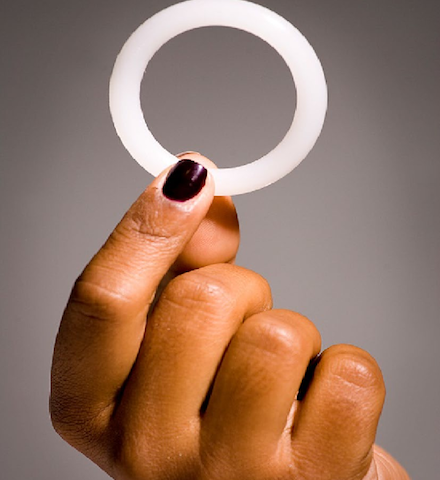By Spy Uganda
Kampala: As generations grows with technology, the Uganda’s health system seems to be advancing after Uganda has been listed among the first eight countries that will benefit from the roll out of the vaginal ring used in prevention against HIV aids, according to the International Partnership for Microbicides (IPM).

Infused with microbicides, the ring, which sits on the cervix, has been shown to cut infections by 56% and now Uganda has joined other countries like Kenya, Rwanda, Tanzania, Malawi and South Africa who are to benefit from the development.
These come after the vaginal ring has successfully under gone three mandatory trials until it was given a nod recently by the European Medicines Agency to be used as an HIV prevention method by women who may engage in risky sex.

Among the trials the ring has been going through include the ASPIRE and the study drug trial that involved 4,500 women from Uganda, Zimbabwe, Malawi and South Africa. The trial in Uganda was conducted at sites in Masaka and Kampala, one led by the International Partnership on Microbicides and the other by the Microbicide Trials Network-MTN.

At the end of the studies, scientists established that among women who appeared to use the ring most regularly, the HIV risk was cut by more than half across all analyses and in some by 75 percent or more. The results from exploratory analyses of data suggest that even higher levels of protection can be achieved with regular and consistent use.

TheSpy Uganda has also learnt that this vaginal ring is already popular with teenage girls globally, US scientists say.
Women girls aged 15-24 account for a fifth of all new HIV infections globally and nearly 1,000 are infected every day in Sub-Saharan Africa.

Experts say that the ring frees women from relying on men to wear condoms and allows them to protect themselves confidentially.
Dr Anthony Fauci, the director of the US National Institute of Allergy and Infectious Diseases, revealed, “If you can give women the opportunity to protect themselves in a way that is completely confidential – that’s a long and big step to helping them. In societies where women are, unfortunately but true, somewhat second-class citizens, that makes women extremely vulnerable to getting infected with HIV.”
The six-month US trial gave the ring to 96 sexually active girls aged 15 to 17, who had not used it before and data presented at the IAS Conference on HIV Science, showed:
- 87% of the girls had detectable levels of the drug in their vagina
- 95% said the ring was easy to use
- 74% said they did not notice the ring in day-to-day life
There were some concerns before the trial that the girls’ partners would not like the feel of the ring, but it reportedly enhanced pleasure.
According to the Prof Sharon Hillier, one of the researchers at the University of Pittsburgh School of Medicine, “HIV doesn’t distinguish between a 16-year-old and an 18-year-old. Access to safe and effective HIV prevention shouldn’t either, young women of all ages deserve to be protected.”









I truly appreciate this blog post.Thanks Again. Cool.
This is a really good tip especially to those fresh to the blogosphere. Brief but very precise info… Many thanks for sharing this one. A must read article!
Great blog post. Keep writing.
Greetings! I know this is kind of off topic but I was wondering if you knew where I could locate a captcha plugin for my comment form?I’m using the same blog platform as yours and I’m having difficulty finding one?Thanks a lot!
I appreciate you sharing this article.Thanks Again. Will read on…
Good day! Do you use Twitter? I’d like to follow you if that would beok. I’m definitely enjoying your blog and look forwardto new posts.
Just wanna say that this is invaluable , Thanks for taking your time to write this.
Wow that was strange. I just wrote an extremely long commentbut after I clicked submit my comment didn’t show up.Grrrr… well I’m not writing all that over again.Anyways, just wanted to say wonderful blog!
Now I am going away to do my breakfast, afterward having mybreakfast coming yet again to read additional news.
Fantastic blog.Much thanks again. Much obliged.
Thank you for your blog article.Thanks Again. Will read on…Loading…
I’m not sure why but this blog is loading incredibly slow for me.Is anyone else having this issue or is it aproblem on my end? I’ll check back later on and see if the problem still exists.
Well I truly enjoyed studying it. This post provided by you is very useful for correct planning.
apartments in mooresville nc elkhorn apartments apartments for rent in mexico city
Good blog! I truly love how it is simple on my eyes and the data are well written. I am wondering how I might be notified when a new post has been made. I have subscribed to your feed which must do the trick! Have a great day!
Exceptional post however I was wanting to know if you could write a litte more on this topic? I’d be very thankful if you could elaborate a little bit more. Kudos!
I really like and appreciate your article post.Really looking forward to read more. Really Cool.
I simply wished to appreciate you once more. I am not sure the things that I would’ve achieved without the type of secrets shared by you relating to my theme. This was a very frustrating issue in my position, nevertheless finding out your skilled fashion you managed that took me to leap over delight. Now i’m grateful for this work and as well , sincerely hope you find out what a great job you are carrying out teaching people with the aid of your website. Most likely you have never come across any of us.
We absolutely love your blog and find the majority of your post’s to be exactly I’m looking for. Does one offer guest writers to write content available for you? I wouldn’t mind producing a post or elaborating on some of the subjects you write with regards to here. Again, awesome weblog!
Good – I should definitely pronounce, impressed with your website. I had no trouble navigating through all the tabs as well as related information ended up being truly easy to do to access. I recently found what I hoped for before you know it in the least. Reasonably unusual. Is likely to appreciate it for those who add forums or anything, site theme . a tones way for your client to communicate. Excellent task..
Pretty nice post. I just stumbled upon your blog and wished to say that I’ve truly enjoyed surfing around your blog posts. After all I’ll be subscribing to your feed and I hope you write again very soon!
Hi there would you mind letting me know which web host you’re utilizing? I’ve loaded your blog in 3 different browsers and I must say this blog loads a lot quicker then most. Can you suggest a good internet hosting provider at a honest price? Thank you, I appreciate it!
Hey very nice web site!! Man .. Beautiful .. Amazing .. I will bookmark your site and take the feeds also…I’m happy to find a lot of useful information here in the post, we need develop more strategies in this regard, thanks for sharing. . . . . .
My brother suggested I might like this website. He was entirely right. This post truly made my day. You cann’t imagine simply how much time I had spent for this info! Thanks!
Have you ever thought about including a little bit more than just your articles? I mean, what you say is important and all. Nevertheless just imagine if you added some great images or videos to give your posts more, “pop”! Your content is excellent but with pics and videos, this site could undeniably be one of the best in its niche. Good blog!
Pretty section of content. I just stumbled upon your weblog and in accession capital to assert that I get actually enjoyed account your blog posts. Any way I’ll be subscribing to your augment and even I achievement you access consistently rapidly.
good powerpoint presentations need homework help research paper purpose
There is definately a lot to find out about this subject. I really like all of the points you have made.
Remarkable things here. I’m very glad topeer your article. Thank you a lot and I’m taking a look forward to touch you.Will you kindly drop me a e-mail?
research paper 4th grade outline essay writing descriptive write an essay in english
I’ve been looking for photos and articles on this topic over the past few days due to a school assignment, keonhacai and I’m really happy to find a post with the material I was looking for! I bookmark and will come often! Thanks 😀
Hi there, after reading this awesome post i am also cheerful to share my knowledge here with mates.
Hey there! I’m at work surfing around your blog from my new iphone 4!Just wanted to say I love reading through your blog and look forward toall your posts! Carry on the great work!
amoxicillin itching clarithromycin amoxicillin can i drink alcohol with amoxicillin amoxicillin how it works
If you find it anywhere else, then ie.exe is a virus, Trojan, worm, or adware! Company has put in many the latest features and many old existing features are increasingly being polished.
Thank you, I’ve recently been searching for info about this topic for a while and yours is the best I have came upon till now. But, what about the bottom line? Are you sure about the supply?
Hi, everything is going perfectly here and ofcourse every one is sharing data, that’sin fact fine, keep up writing.
Mangalloy, likewise called manganese steel or Hadfield steel, is an alloy steel consisting of approximately around 13 manganese.
There’s definately a lot to learn about this issue. I love all the points you’ve made.
I am curious to find out what blog system you’re using? I’m experiencing some small security problems with my latest blog and I’d like to find something more safeguarded. Do you have any recommendations?monero
88376 563709Perfect just what I was searching for! . 50516
weaning off prilosec omeprazole side effects weight gain
provigil side effects modalert 200 provigil pill
Enjoyed every bit of your post. Really Great.
Thank you ever so for you blog article.Really looking forward to read more. Really Cool.
wow, awesome blog article.Really looking forward to read more. Will read on…
Thanks again for the post.Really looking forward to read more. Much obliged.
Really enjoyed this blog post.Thanks Again. Cool.
Thank you for your blog article.Really looking forward to read more.
Hey there! This post could not be written any better! Reading through this post reminds me of my old room mate! He always kept talking about this. I will forward this post to him. Fairly certain he will have a good read. Thanks for sharing!
doxy doxycycline for sale – where to purchase doxycycline
Hiç kimse takipçi satın almak zorunda değildir. Takipçi satın alan kişiler bunu iyi yönettiği takdirde zarar görmemektedir.
Thanks for sharing, this is a fantastic blog article.Much thanks again. Awesome.